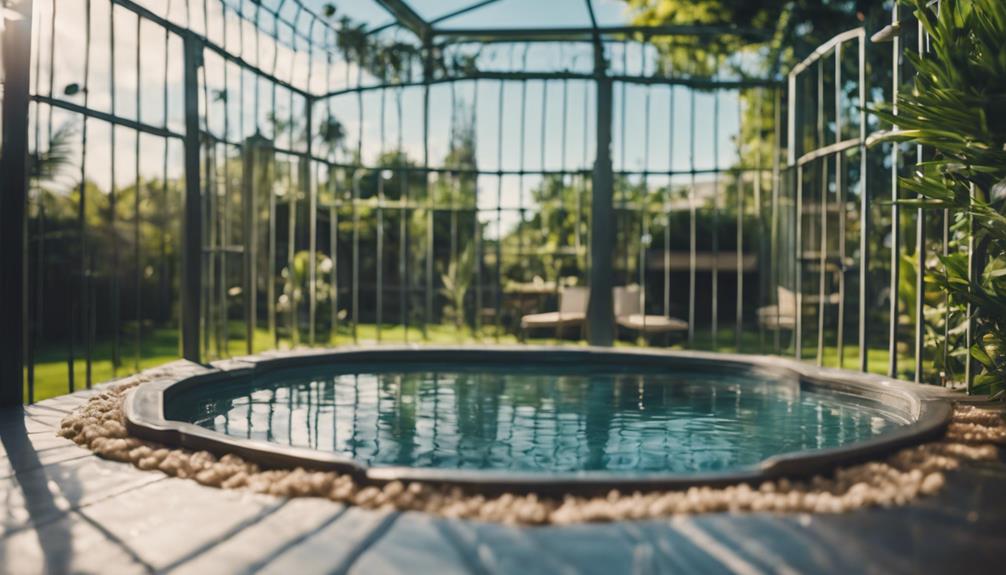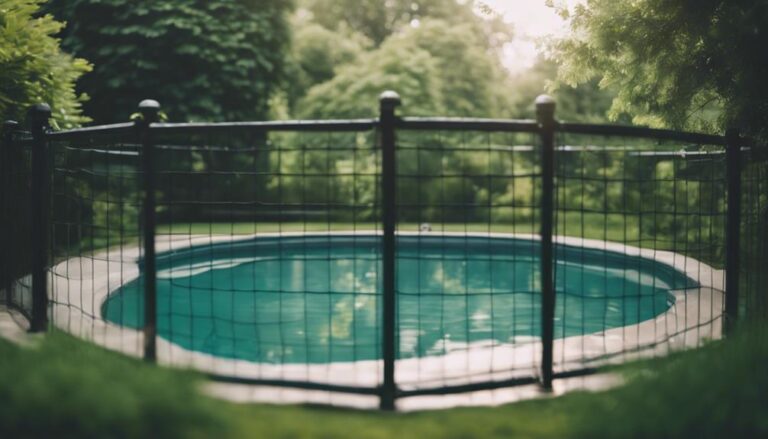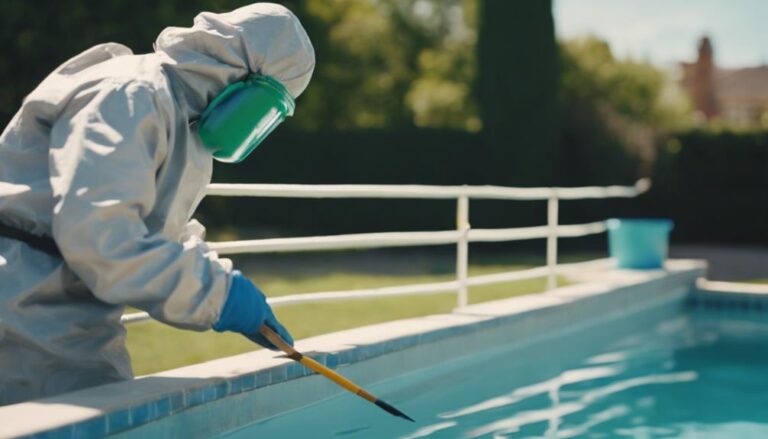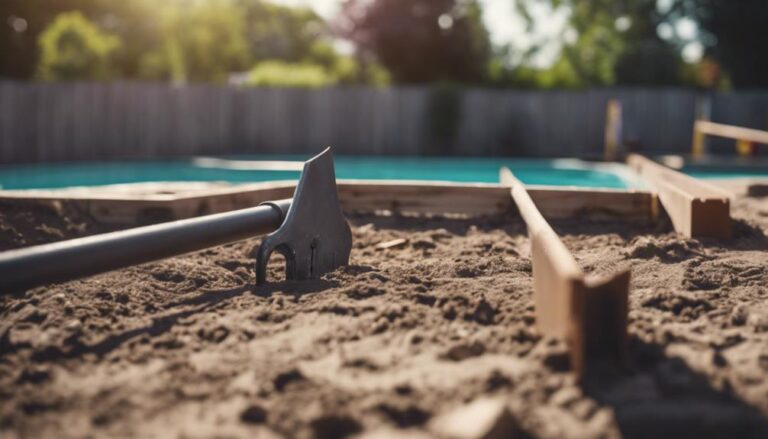Do you need a pool fence for a spa?
Indeed, a pool fence for your spa is essential. This requirement goes beyond mere compliance; it's focused on safeguarding and meeting legal regulations.
For spas exceeding 2000L or with a water depth above 300mm, it is mandatory to install a safety barrier that is at least 1.2m in height. This rule goes beyond administrative procedures and plays a crucial role in preventing drownings, especially among children under five.
British standards and specific regional regulations may outline the necessary measures, but the main goal remains the same: to protect your family. Understanding these regulations will help you make informed choices.
Understanding Pool Fence Laws
Navigating Queensland's pool fence laws is essential for ensuring the safety of your spa area, as failure to comply can result in significant penalties. Under the strict pool safety laws in Queensland, if your spa holds more than 2000L or has a water height of at least 300mm, it's obligatory to install a safety barrier. This barrier must have a minimum height of 1.2m to comply with regulations, highlighting the importance of adhering to these guidelines to avoid legal consequences.
When incorporating a spa into an existing pool area, it's crucial to verify that your fencing meets the required safety standards. This not only protects your loved ones but also ensures you comply with the law. For portable spas, registration with the council is required, in addition to compliance with the state's safety barrier regulations.
Furthermore, selling or leasing a property with a spa requires obtaining a pool safety certificate from a licensed inspector. This certificate demonstrates your compliance with Queensland's stringent pool safety laws, showing a commitment to safety and legal responsibility. Ensuring your spa area meets these requirements isn't merely about compliance with the law—it's about creating a safe and secure environment for all.
Safety Benefits for Children
To safeguard children under five, who are at a 50% increased risk of drowning, it is essential to install safety barriers around your spa. The advent of fibreglass pools in the 1970s highlighted the dire consequences of insufficient pool safety measures, resulting in a surge in drowning incidents among young children. This emphasises the critical need for robust safety barriers to protect our most vulnerable.
Safety barriers, such as fencing and child-resistant structures, are paramount in preventing such tragedies. They restrict access to spas, ensuring that young children cannot wander into hazardous areas unsupervised. Compliance with the Australian Standard AS1926.1-2012 is not merely a recommendation—it is a requirement to guarantee that your spa's barriers are effectively preventing accidents.
Below is a concise overview to aid your understanding:
| Benefit | Description | Importance |
|---|---|---|
| Drowning Prevention | Safety barriers prevent unsupervised access, significantly reducing drowning risks. | Critical |
| Compliance | Adhering to Australian Standard AS1926.1-2012 ensures barriers meet safety requirements. | Compulsory |
| Access Restriction | Fencing and child-resistant structures limit children's access to spas. | Crucial |
Legal Requirements by State
Understanding the legal requirements for spa safety barriers across various Australian states is essential for compliance and accident prevention. Each state has its regulations, aligned with different versions of the Australian Standard, to ensure pool safety for spa pools.
In the Australian Capital Territory, for instance, new spas must adhere to the Australian Standard AS1926.1-2012, which necessitates a pool safety barrier. New South Wales mandates this standard as well, requiring safety barriers for spas unless they're equipped with child-resistant structures. This requirement ensures your spa isn't only compliant but also safe for children.
The approach in the Northern Territory is based on AS 1926.1 – 1993, with standards varying depending on the installation date and the property's status. This variation means that you must be aware of the specific requirements that apply to your situation to ensure compliance.
In Queensland, a safety barrier is mandatory for spa pools, and a building permit is required for the spa installation. Additionally, residential pools must be registered with the QBCC. This thorough approach highlights the importance of adhering to state-specific laws and regulations to prevent accidents and ensure the safety of all spa users.
Regular Maintenance Tips
Maintaining the integrity of your spa's safety barrier is crucial for compliance with safety standards. Regular inspections and maintenance are necessary to prevent accidents. It's vital to examine the spa fence thoroughly, repairing any damaged or worn parts to maintain the highest safety levels.
The spa gate is a pivotal element in preventing unauthorised access. Ensure it's always securely fastened. The gate must be self-closing and self-latching, significantly reducing the chance of unauthorised entry, particularly by young children.
Vegetation or obstacles near the spa fence may appear innocuous but could weaken its effectiveness. It's essential to trim any nearby growth regularly, ensuring there are no means to climb over or compromise the fence's stability.
Compliance with maintenance protocols isn't merely advisable; it's mandatory. Regularly reviewing and adhering to the relevant regulations and standards concerning spa safety barriers is imperative. This not only assures that your spa area remains secure but also safeguards against potential legal issues.
Addressing Common Concerns
When addressing common concerns about spa safety, it is important to recognise that while lockable spa lids are helpful, they do not remove the need for a compliant pool safety barrier to effectively prevent accidents. In Queensland, legislation mandates a pool safety barrier for spas and swim spas, highlighting the importance of these measures in reducing potential risks. Despite the convenience of lockable lids, there is still a risk that they could be left open or unlocked, increasing the danger to young children and vulnerable individuals by making it more likely for them to fall in.
Obtaining building approval before installing your spa ensures that a building certifier has checked and approved the pool safety barrier, meeting the strict standards set for pool and spa safety. This step is not just about following the rules but also about providing reassurance.
For those thinking about portable spas or paddling pools, it is crucial to understand that specific criteria must be met to be exempt from pool safety regulations. This means that not all portable options can avoid the need for a safety barrier.
Furthermore, if you are selling or renting out a property with a spa, you must obtain a pool safety certificate from an authorised inspector. This certificate confirms your commitment to safety and is a necessary part of the process, ensuring that your spa complies with the required safety regulations.
Frequently Asked Questions
Is a fence required around a swim spa?
Yes, you'll need a fence around your swim spa. In Queensland, it's mandatory for safety and compliance. The barrier must be at least 1.2m high, and you'll also need building approval to install it.
Is it illegal not to have a fence around a pool?
Yes, it is illegal to not have a fence around your pool in most places. You are risking fines and penalties without one, as it is essential for preventing accidents and ensuring everyone's safety, especially children's.
What is the Australian Standard for SPASA?
The Australian Standard for spas is AS1926.1-2012, which establishes crucial safety barrier requirements for spas at residential buildings. It is important to adhere to these standards to guarantee the safety of your spa, which involves installing appropriate barriers, not just lockable hardcovers.
Is it illegal not to have a fence around a pool in Australia?
Yes, it is illegal not to have a fence around your pool in Australia. You are risking fines and penalties if you do not comply with the safety regulations that require barriers to prevent drowning accidents.






